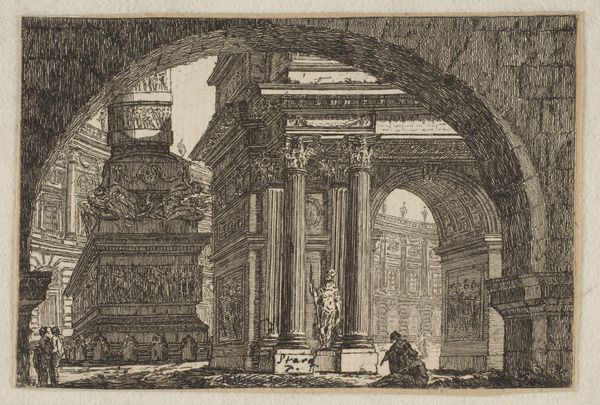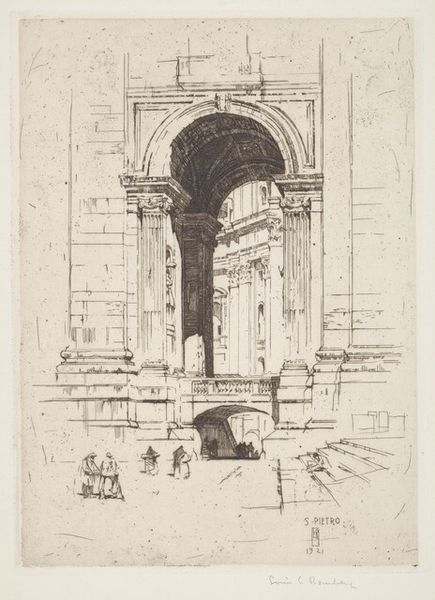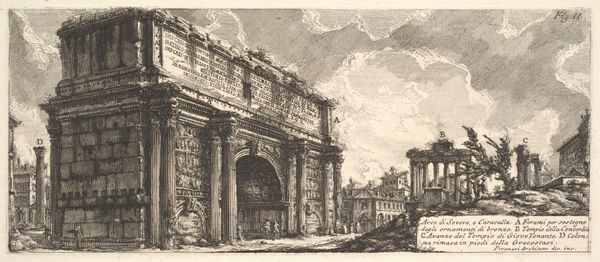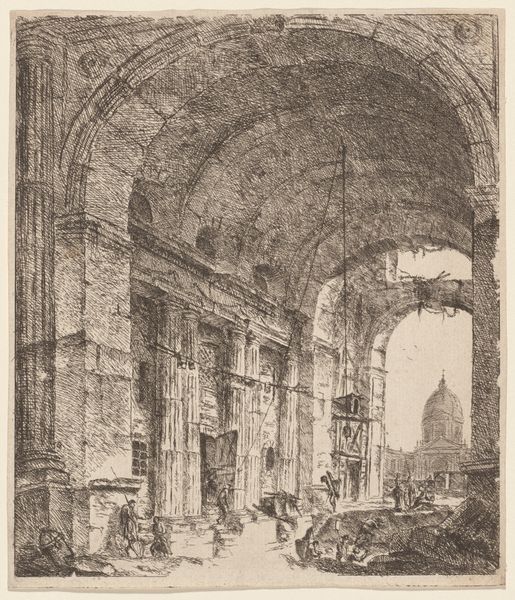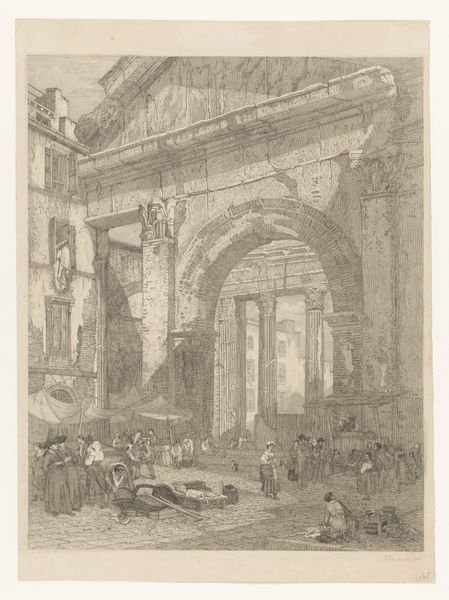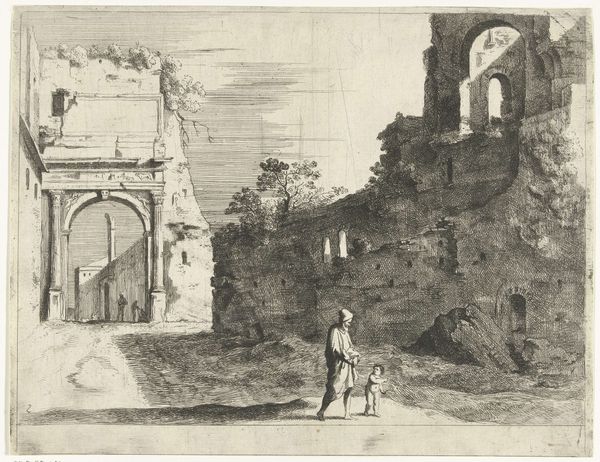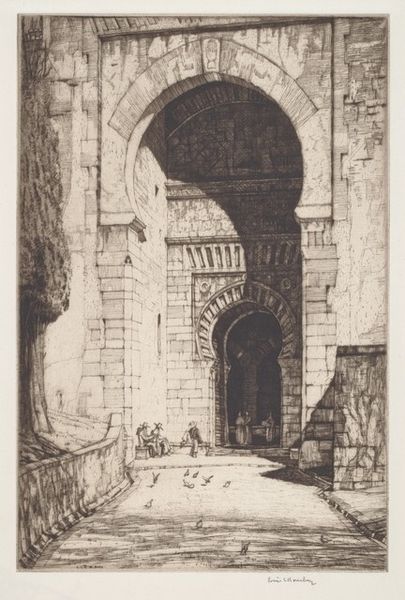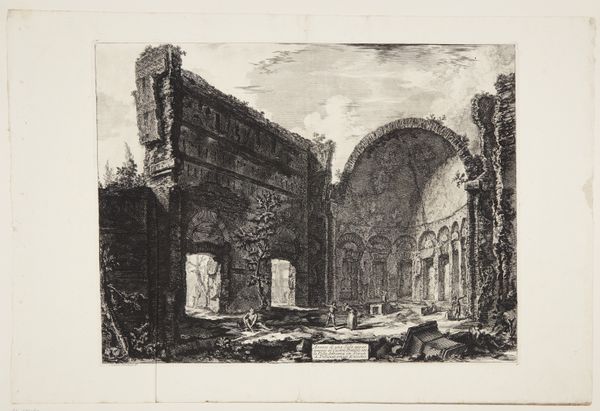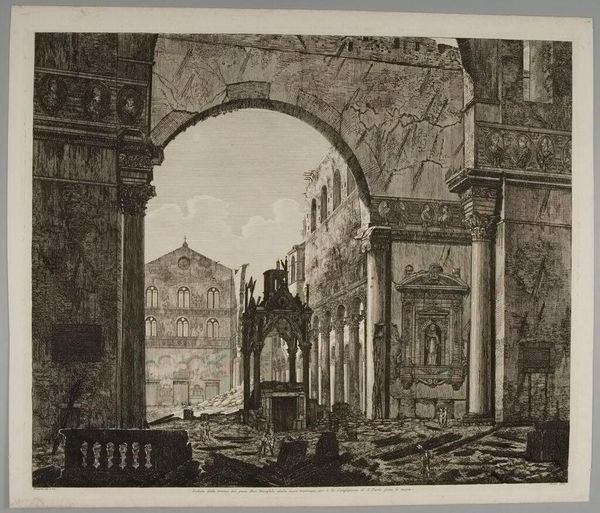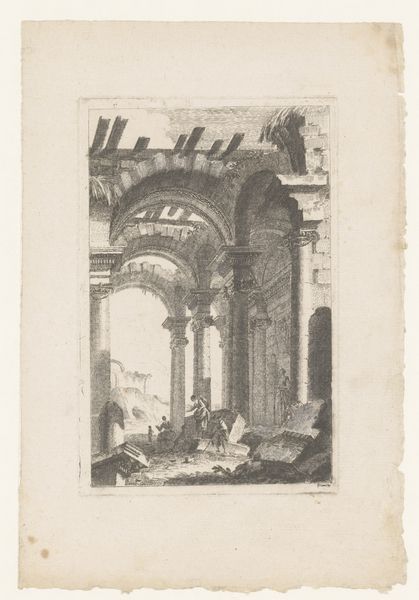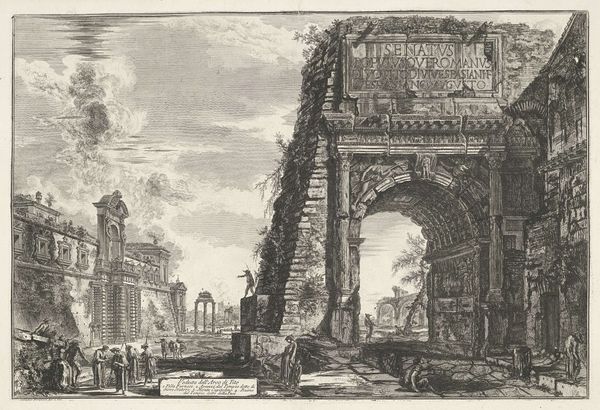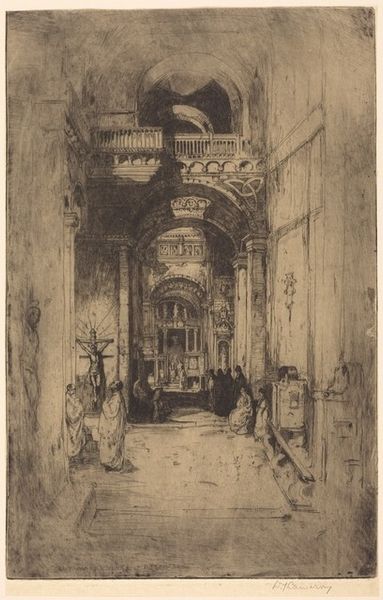
print, etching
# print
#
etching
#
cityscape
#
academic-art
#
modernism
#
realism
Dimensions: Image: 279 x 305 mm Sheet: 337 x 343 mm
Copyright: National Gallery of Art: CC0 1.0
Editor: We’re looking at Rose Crosman’s 1927 etching, "Municipal Arch, Manhattan." I’m immediately struck by the contrast between the arch’s monumental, almost classical form, and the everyday bustle happening underneath it. What do you see in this piece, considering its historical context? Curator: It's a compelling contrast, isn't it? The etching captures a pivotal moment in New York’s history, specifically looking at urban development through the lens of class and power. Consider the arch itself: modeled after Roman triumphal arches, meant to symbolize victory and civic pride. Crosman places it within a modern, rapidly changing cityscape, bustling with commerce. What does it mean to frame that ‘victory’ through architecture that's supposed to be democratic and for the people? Who actually benefits from the supposed 'progress' that the arch is meant to represent? Editor: So, it’s less about celebrating the arch itself and more about questioning what it represents for the city’s inhabitants? Curator: Precisely. Notice how Crosman uses the etching technique to create a hazy, almost dreamlike atmosphere. This isn't a straightforward celebration; it's a critical examination. Consider also that during the 1920s, debates surrounding immigration and the 'melting pot' were extremely high. The arch almost serves as a physical representation of a threshold for many arriving in New York, begging us to reflect on how power is inscribed into our environment and our history. How does she use that dreamlike quality to invite questioning of authority and its power dynamics? Editor: It reframes the triumphal arch less as a celebration and more as a monument laden with questions about equity and progress in the booming metropolis. That's not what I was expecting! Curator: It's these layers of historical and social commentary that makes this etching so thought-provoking, isn't it? Looking closely reminds us to always question who gets to inscribe their values and version of ‘progress’ into the spaces that we inhabit.
Comments
No comments
Be the first to comment and join the conversation on the ultimate creative platform.
